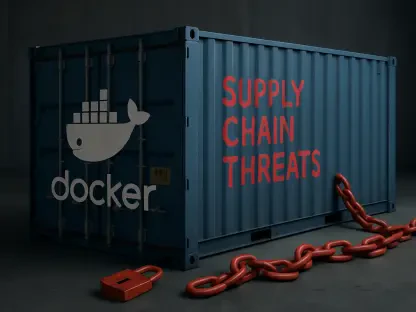Short introduction Meet Maryanne Baines, a leading authority in cloud technology with extensive experience evaluating cloud providers, their tech stacks, and applications across various industries, including critical sectors like national defense. In this interview, we dive into the complexities of the US Navy’s dependency on Microsoft Azure for the NAVSEA Cloud, exploring why this custom-built platform is so vital to naval operations, the challenges of switching providers, the financial and operational implications of such a move, and the broader lessons for government technology contracts. Maryanne offers her expert insights into how these decisions shape national security and the future of cloud infrastructure in the military.
How does the NAVSEA Cloud fit into the Naval Sea Systems Command’s broader mission, and why is it so essential?
The NAVSEA Cloud is a cornerstone of the Naval Sea Systems Command’s operations, serving as a tailored cloud environment that supports critical mission systems. It’s essentially the backbone for a range of functions, from data management to application deployment, that keep naval operations running smoothly. Without it, the Navy would struggle to maintain the real-time capabilities needed for everything from logistics to combat readiness. Its importance to national security can’t be overstated—it’s not just about efficiency; it’s about ensuring that our forces have the technological edge to respond to threats at a moment’s notice.
What makes the NAVSEA Cloud so reliant on specific Microsoft Azure services, and how did that dependency come about?
The NAVSEA Cloud was built from the ground up using Azure-specific tools like Azure Data Transfer, Azure Kubernetes Service, and Azure SQL PaaS. These services aren’t just plug-and-play; they’re deeply integrated into the platform’s architecture. This kind of dependency often happens when a project prioritizes speed and compatibility during development, leveraging a single provider’s ecosystem for seamless integration. While I don’t have insider details on the Navy’s decision-making process, it’s common in government projects to choose a provider with a proven track record for meeting stringent security and scalability needs, which likely influenced the heavy reliance on Azure.
Why would transitioning the NAVSEA Cloud to another provider require a complete rebuild, and what are the biggest hurdles in that process?
Moving to another provider isn’t as simple as transferring data; it’s about re-engineering an entire system that’s been custom-built on Azure’s unique tools and frameworks. The applications and workflows are coded to work within that specific environment, so adapting them to another provider’s infrastructure would mean rewriting significant portions of the system from scratch. The biggest hurdles are technical compatibility—other providers might not have direct equivalents for Azure’s services—and the risk of disrupting mission-critical operations during the transition. It’s a complex puzzle with high stakes.
How does a projected 36-month delay for switching providers impact the Navy, and what steps contribute to that timeline?
A 36-month delay is a massive setback for any military program, especially one tied to national defense. That timeline likely accounts for planning, redesigning the system, testing for security and performance, and finally migrating data and applications. During this period, the Navy could face gaps in capability or reduced efficiency, which might affect everything from fleet readiness to strategic decision-making. It’s not just about time; it’s about the potential vulnerabilities that could emerge while the system is in flux, making such a delay a serious concern for operational continuity.
What kinds of costs—beyond just financial—would the Navy face if they had to maintain NAVSEA Cloud on Azure while building a new system elsewhere?
The costs are multifaceted. Financially, you’re paying for two systems at once—keeping the current Azure setup running while investing in a new platform. But there’s also the manpower cost: engineers, developers, and IT staff would be stretched thin managing dual environments. Then there’s the time cost, as resources are diverted from other priorities to handle this transition. All of this strains the Navy’s budget and human resources, potentially delaying other critical projects and impacting overall mission readiness.
When NAVSEA explored options with other cloud providers, what were some of the key limitations that prevented those alternatives from meeting the Navy’s needs?
While I wasn’t privy to those specific conversations, it’s likely that other providers couldn’t offer the same level of service parity with the existing NAVSEA Cloud setup. Azure’s tools are highly specialized, and replicating their functionality on another platform isn’t straightforward. Other providers might lack the exact security certifications or integration capabilities required for such a sensitive environment. Additionally, the timeframe for adaptation was probably a dealbreaker—naval operations can’t afford prolonged disruptions, so any solution that couldn’t be implemented quickly was off the table.
Looking ahead, how do you see the Navy’s experience with NAVSEA Cloud shaping future cloud infrastructure decisions for the military?
This situation is a wake-up call for the military to prioritize flexibility in cloud contracts. We’re likely to see a push toward open standards, like containerization frameworks that aren’t tied to a single provider, to avoid vendor lock-in. There’s also going to be a stronger focus on building systems with portability in mind from the outset. The Navy’s experience highlights the risks of over-reliance on one provider, so I expect future strategies will balance immediate needs with long-term adaptability, ensuring that national security isn’t compromised by technical dependencies.
What’s your forecast for the future of cloud technology in military applications, especially regarding balancing security and innovation?
I think we’re heading toward a hybrid model where the military leverages both private and public cloud environments to maximize security and innovation. Security will always be paramount—especially after high-profile breaches—so expect heavier investments in zero-trust architectures and advanced encryption. At the same time, innovation can’t be stifled; the military needs cutting-edge tools to stay ahead of adversaries. The challenge will be integrating new technologies without introducing vulnerabilities, and I believe we’ll see more collaboration between government and industry to create tailored, secure cloud solutions that can evolve with emerging threats.









